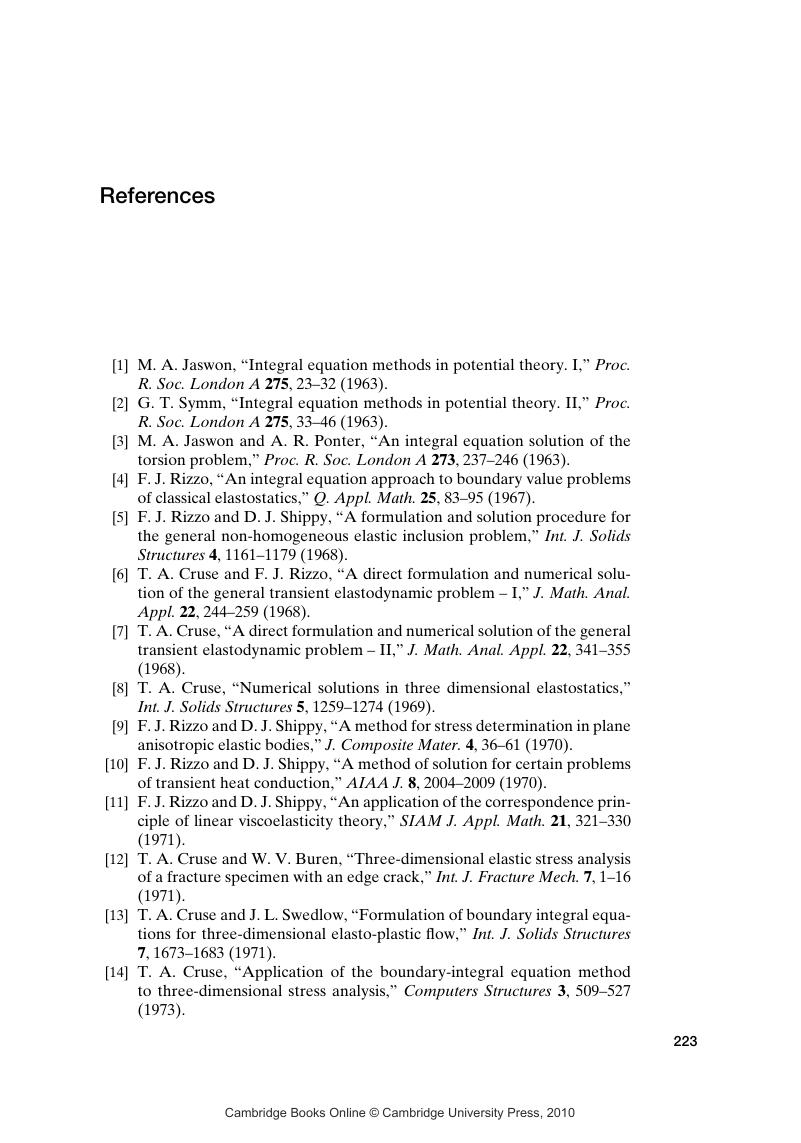Book contents
- Frontmatter
- Contents
- Preface
- Acknowledgments
- Acronyms Used in This Book
- 1 Introduction
- 2 Conventional Boundary Element Method for Potential Problems
- 3 Fast Multipole Boundary Element Method for Potential Problems
- 4 Elastostatic Problems
- 5 Stokes Flow Problems
- 6 Acoustic Wave Problems
- APPENDIX A Analytical Integration of the Kernels
- APPENDIX B Sample Computer Programs
- References
- Index
- References
References
Published online by Cambridge University Press: 14 January 2010
- Frontmatter
- Contents
- Preface
- Acknowledgments
- Acronyms Used in This Book
- 1 Introduction
- 2 Conventional Boundary Element Method for Potential Problems
- 3 Fast Multipole Boundary Element Method for Potential Problems
- 4 Elastostatic Problems
- 5 Stokes Flow Problems
- 6 Acoustic Wave Problems
- APPENDIX A Analytical Integration of the Kernels
- APPENDIX B Sample Computer Programs
- References
- Index
- References
Summary

- Type
- Chapter
- Information
- Fast Multipole Boundary Element MethodTheory and Applications in Engineering, pp. 223 - 232Publisher: Cambridge University PressPrint publication year: 2009



